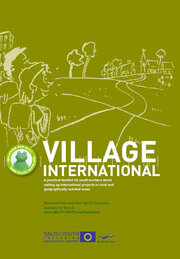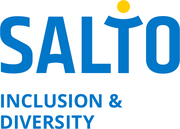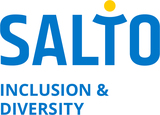Solve transport and mobility issues
Limited transport facilities are a big barrier for rural young people who might want to participate in or organise international projects. When there is hardly any public transport system, it is difficult to be mobile (unless you rely on others or have your own car). And even if there is some public transport (or someone that drives you), the geographic distances make it more expensive and time-consuming to travel. What can you do about this?
Be creative and use the means that are there
- To get to your international project in a remote area, you need to arrange transport to the venue. If there is no public transport available, you could try other possibilities: you could arrange some sponsorship with a local bus company, maybe the town council has a school-bus that could come and pick you up, think about any other organisation that has transport (e.g. choir, sports club,...) or parents might organise a shuttle service in their own cars between the nearest station and the village.
- For getting from A to B during your youth exchange, it might be much cheaper to organise alternative transport like bikes, motor-boats, horses & carriages, tractors & trailers, etc. Surely this is even more fun for participants, instead of waiting for a bus. Or you could do a nature hike from A to B instead of taking the bus, and stay overnight in the hayloft of a farm on the way there. It all adds to the 'rural' theme of your activity.
Find extra money for travel and transport
- If you still need to have proper wheels, and you need to pay for those, then you also need to get money for it. Add this mobility cost in your budget.
- The Youth in Action grants usually cover 70% of travel costs. So you will need to get the remaining 30% from other resources. Some organisations ask for a fee from the participants to cover this 30%, but you can also look for co-funding: maybe your town council can support you financially, maybe some of the parents want to make a donation or a local company wants to sponsor your event.
- You can also do all kinds of fund-raising activities: organise a party, sell cakes, hold a raffle, wash cars, help out on a farm,... There are thousands of ways to get some more income. Have a look at the SALTO Toolbox www.SALTO-YOUTH.net/Toolbox/ or the fundraising database at www.fund-raising.com.
- If you are doing a Youth in Action project with young people with fewer opportunities and you can show credibly that your participants would not be able to afford the 30% of the travel costs, you can apply for this extra travel money in the "exceptional costs".
- Also think about ways to level out differences in purchasing power. Some well off kids would not have a problem coughing up the 30% of an international travel ticket, but maybe people from bigger or poorer families might. You could fundraise some extra money for those participants.
The Solidarity Fund for Youth Mobility (Council of Europe) actually sponsors international rail travel for groups of young people with fewer opportunities: www.coe.int/youth/
Do you have any other crazy or creative suggestions on how you solved mobility challenges in your youth project? Share them below! (log in with your SALTO username or create one to leave comments) Thanx a million
^^ top ^^
 www.salto-youth.net/
www.salto-youth.net/
VillageInternational/

 Protected from exclusion
Protected from exclusion
Downloads
The following downloads are available:
- Village International - setting up international projects with rural youth - 2007
A step by step manual through the different stages of setting up a youth project in your rural or geographically isolated area. With lots of practical tips and tricks. Based on SALTO TC Rural 2007. (Rightclick & download to your PC)
